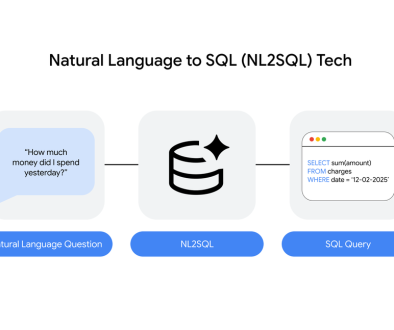GCP – Run a transformed supply chain – see how at Google’s Digital Supply Chain summit
At the start of 2020, who knew that our supply chains would be so disrupted that we’d have to worry about having enough toilet paper or paper towels? Yet, the early days of the COVID-19 pandemic resulted in many disruptions and unanticipated events. On a practical level, the sudden changes in consumer behavior placed supply chains in the spotlight, and revealed to many—including consumers everywhere—the fragility of our logistics networks.
Of course, this disruption wasn’t just isolated to household items. Entire modes of purchasing shifted dramatically (and perhaps permanently). At the end of 2019, 16% of global sales was e-commerce. Within four months, that number grew to 33%. Supply chain companies were forced to adapt almost overnight to massive shifts to e-commerce and rapidly changing delivery models.
The follow-on effects of this shift have been equally dramatic, including leading to a shortage of shipping containers. As COVID-19 lockdowns resulted in fewer people in the ports, this caused shipping traffic jams, which in turn led to a sharp rise in container shipping costs. And let’s not forget perhaps the most visible manifestation of why supply chains are the backbone of the global economy: The massive worldwide effort to deliver and distribute COVID-19 vaccines.
The limitation of today’s supply chains
It is not that supply chain professionals haven’t made investments to better predict demand, deliver or fulfill orders, and manage inventory. In fact, according to IDC Research, investments in supply chain management and service delivery are projected to grow by 34% in just the next 3 years—from $48 billion today to $64 billion by the end of 2023. However, there are still significant limitations to overcome, particularly in three key areas:
-
Visibility: Companies don’t have enough information about their inventories to react to the uncertainties of profound change.
-
Flexibility: Companies running standard processes are slow to adapt to the changes.
-
Intelligence: Without streamlined, cleaned, and actionable data, companies can’t accurately predict and meet demand.
Supply chains, then, are due for innovation. Unlike the manufacturing sector overall, which has adopted everything from AI and robotics to smart factories, supply chains have made only relatively small adjustments to their standard processes.
Join the supply chain transformation at our summit
To help companies discuss and address these pressing issues, we’re hosting a Digital Supply Chain Summit on March 30, 2021, to bring together more than 300 senior supply chain and logistics leaders from across the world. At this event, attendees will learn how they can create a digital supply chain platform that enables them to deliver exceptional customer experience; how to build resilient and sustainable supply chains; and how to run supply chains autonomously through the use of AI, ML, and other advanced technologies.
Among the featured industry speakers are Kuehne+Nagel and J.B. Hunt, both among the world’s leading transportation and logistics companies, who are digitizing their supply chains to enable every process, person, and team. They will discuss their digital transformation journeys, particularly how they’re leveraging the cloud, artificial intelligence, and data analytics to unlock new levels of efficiency and business performance.
Also at the event, you’ll hear from the leaders of Google’s own supply chain and data center operations, who will discuss how the cloud-based solutions they’ve deployed have driven real impact and business results. Finally, industry practice leaders from Accenture and Deloitte will also share how you can architect a customer-centric digital supply chain and a connected digital thread across your extended value chain.
Why be average when you can be unique?
As a company running a supply chain, you don’t need to stick with the status quo. Your transformation can be achieved by leveraging data to power individualized processes, which will set your company apart from the pack. We’re helping companies build a cloud-based digital supply chain platform based on four capabilities:
-
First, using a digital supply chain twin, which is a digital representation of the physical supply chain as its core.
-
Second, using intelligence to anticipate and predict potential outcomes.
-
Third, allowing end users to access information from whatever device they are using, anywhere.
-
And fourth, embracing partnering when it comes to applications. Supply chain companies succeed when they complementing their existing systems with new technologies, making it easier to innovate, adapt, and overcome limitations.
Take the first step to transformation
We welcome you to register for the Google Cloud Digital Supply Chain Summit to get a comprehensive look at how companies are digitally transforming their supply chain and logistics operations. This online event is taking place on March 30. We hope it will help you identify steps you can take today to advance your own digital strategies with cloud-based solutions, data analytics, and AI.
Read More for the details.




